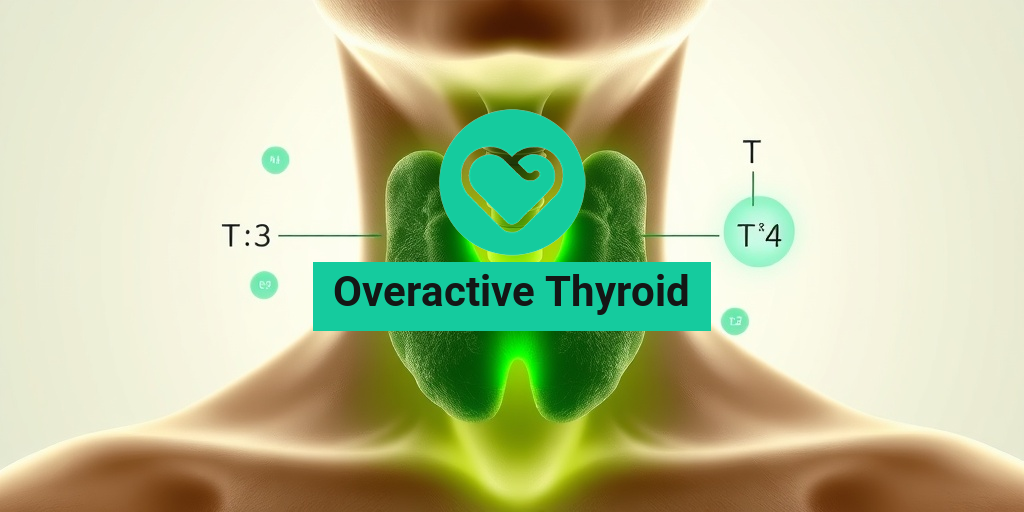What Is Cranial Arteritis?
Cranial arteritis, also known as giant cell arteritis (GCA), is a serious inflammatory condition that primarily affects the blood vessels in the head, particularly the temporal arteries. This condition is most commonly seen in individuals over the age of 50 and can lead to severe complications if not diagnosed and treated promptly. Understanding cranial arteritis is crucial for early detection and effective management.
The inflammation in cranial arteritis can cause the walls of the arteries to thicken, which may restrict blood flow. This can lead to a variety of symptoms and, in severe cases, can result in vision loss or stroke. The exact cause of cranial arteritis remains unclear, but it is believed to be related to an autoimmune response where the body’s immune system mistakenly attacks its own tissues.
Risk Factors for Cranial Arteritis
Several factors may increase the risk of developing cranial arteritis, including:
- Age: Most commonly affects individuals over 50.
- Gender: Women are more likely to develop the condition than men.
- Ethnicity: Higher prevalence in individuals of Northern European descent.
- Other autoimmune diseases: Conditions like rheumatoid arthritis or polymyalgia rheumatica may increase risk.
If you suspect you or someone you know may be experiencing symptoms of cranial arteritis, it is essential to seek medical advice promptly. Resources like Yesil Health AI can provide evidence-based health answers and guidance.
Cranial Arteritis Symptoms
The symptoms of cranial arteritis can vary widely among individuals, but some common signs to watch for include:
1. Headaches
One of the most prevalent symptoms is a persistent headache, often described as severe and throbbing. These headaches may be localized to the temples or the back of the head.
2. Scalp Tenderness
Many individuals with cranial arteritis experience tenderness in the scalp, particularly when brushing hair or applying pressure to the area. This sensitivity can be quite uncomfortable.
3. Vision Changes
Vision problems, including blurred vision or sudden vision loss, can occur due to inflammation of the arteries supplying blood to the eyes. This is a medical emergency and requires immediate attention.
4. Jaw Pain
Some people may experience jaw pain, especially when chewing or talking. This condition, known as jaw claudication, occurs due to reduced blood flow to the jaw muscles.
5. Fatigue and Fever
General feelings of fatigue, malaise, and low-grade fever are also common symptoms. These systemic symptoms can often be mistaken for other illnesses.
6. Unexplained Weight Loss
Unintentional weight loss can occur as a result of the body’s inflammatory response. If you notice significant weight loss without trying, it’s essential to consult a healthcare provider.
Recognizing these symptoms early can be crucial in preventing serious complications associated with cranial arteritis. If you experience any of these signs, especially vision changes or severe headaches, seek medical attention immediately.
In conclusion, cranial arteritis is a serious condition that requires prompt diagnosis and treatment. Understanding its symptoms and risk factors can empower individuals to seek help early, potentially preventing severe complications. For more information and resources, consider visiting Yesil Health AI for reliable health insights. Stay informed and take charge of your health! 🌟

Cranial Arteritis Causes
Cranial arteritis, often referred to as giant cell arteritis, is a condition characterized by inflammation of the blood vessels, particularly those in the head and neck. Understanding the causes of cranial arteritis is crucial for effective diagnosis and treatment. While the exact cause remains unclear, several factors are believed to contribute to its development.
Immune System Dysfunction
One of the primary causes of cranial arteritis is thought to be an abnormal response of the immune system. In this condition, the immune system mistakenly attacks the body’s own blood vessels, leading to inflammation. This autoimmune reaction can result in damage to the arteries, causing symptoms such as headaches, vision problems, and jaw pain.
Genetic Predisposition
Research suggests that genetics may play a role in the development of cranial arteritis. Individuals with a family history of autoimmune diseases or inflammatory conditions may be at a higher risk. Certain genetic markers have been associated with an increased likelihood of developing this condition, indicating that inherited factors could contribute to its onset.
Age and Gender Factors
Cranial arteritis predominantly affects older adults, particularly those over the age of 50. Additionally, women are more likely to develop this condition than men, with studies indicating that the female-to-male ratio is approximately 3:1. This age and gender disparity suggests that hormonal and biological factors may influence the risk of developing cranial arteritis.
Environmental Triggers
While the precise environmental triggers remain uncertain, some studies have suggested that infections or other inflammatory conditions may precipitate cranial arteritis. For instance, viral infections could potentially trigger an immune response that leads to the inflammation of blood vessels. However, more research is needed to establish a definitive link between environmental factors and the onset of this condition.
Cranial Arteritis Risk Factors
Identifying the risk factors associated with cranial arteritis can help in early detection and management of the disease. Here are some key risk factors to consider:
Age
As mentioned earlier, age is a significant risk factor for cranial arteritis. The condition is most commonly diagnosed in individuals aged 50 and older. The risk increases with advancing age, making regular check-ups essential for older adults.
Gender
Women are at a higher risk of developing cranial arteritis compared to men. This gender disparity may be linked to hormonal differences, although the exact reasons remain unclear. Women should be particularly vigilant for symptoms, especially if they are over the age of 50.
Existing Autoimmune Conditions
Individuals with a history of other autoimmune diseases, such as rheumatoid arthritis or lupus, may have an increased risk of developing cranial arteritis. The presence of these conditions can indicate a predisposition to inflammatory responses in the body.
Family History
A family history of cranial arteritis or other autoimmune diseases can elevate an individual’s risk. If you have relatives who have been diagnosed with this condition, it may be beneficial to discuss your family history with your healthcare provider.
Ethnicity
Cranial arteritis is more prevalent among individuals of Northern European descent. Studies have shown that people of Scandinavian or British ancestry are at a higher risk, suggesting that genetic factors may play a role in the condition’s development.
Previous Inflammatory Conditions
Individuals who have experienced other inflammatory conditions, such as polymyalgia rheumatica, may also be at an increased risk for cranial arteritis. This connection highlights the importance of monitoring for symptoms in those with a history of inflammatory diseases.
In conclusion, understanding the causes and risk factors associated with cranial arteritis is vital for early detection and effective management. If you or someone you know is experiencing symptoms such as persistent headaches, jaw pain, or vision changes, it is essential to seek medical attention promptly. 🩺

Cranial Arteritis Diagnosis
Cranial arteritis, often referred to as giant cell arteritis, is a serious condition that primarily affects the blood vessels in the head, particularly the temporal arteries. Early diagnosis is crucial to prevent complications, including vision loss. Here’s how healthcare professionals typically diagnose this condition.
Recognizing Symptoms
The first step in diagnosing cranial arteritis involves recognizing its symptoms. Common symptoms include:
- Severe headaches: Often described as a new type of headache, it can be persistent and debilitating.
- Scalp tenderness: Patients may experience pain when touching the scalp, particularly over the temples.
- Vision problems: Blurred vision or sudden vision loss can occur, indicating a medical emergency.
- Jaw pain: Pain while chewing or talking, known as jaw claudication, is a hallmark symptom.
- Fatigue and fever: General malaise, fever, and weight loss may also be present.
Medical Evaluation
If cranial arteritis is suspected, a healthcare provider will conduct a thorough medical evaluation. This typically includes:
- Physical examination: The doctor will check for tenderness in the scalp and assess other symptoms.
- Blood tests: Elevated levels of inflammatory markers, such as erythrocyte sedimentation rate (ESR) and C-reactive protein (CRP), can indicate inflammation.
- Imaging studies: Ultrasound of the temporal arteries can help visualize inflammation and assist in diagnosis.
- Temporal artery biopsy: In some cases, a biopsy may be performed to confirm the diagnosis by examining the artery tissue for inflammation.
Timely diagnosis is essential, as untreated cranial arteritis can lead to serious complications, including permanent vision loss. If you experience any of the symptoms mentioned, it’s important to seek medical attention promptly. 🩺
Cranial Arteritis Treatment Options
Once diagnosed, the treatment of cranial arteritis focuses on reducing inflammation and preventing complications. Here are the primary treatment options available:
Corticosteroids
The cornerstone of treatment for cranial arteritis is the use of corticosteroids. These medications help to quickly reduce inflammation and alleviate symptoms. Commonly prescribed corticosteroids include:
- Prednisone: This is the most commonly used corticosteroid, often starting at a high dose and gradually tapering down.
- Methylprednisolone: In severe cases, intravenous administration may be necessary for rapid relief.
Monitoring and Adjustments
Patients undergoing treatment will require regular monitoring to assess their response to corticosteroids and adjust dosages as needed. This is crucial to minimize side effects and ensure effective management of the condition. Regular follow-ups may include:
- Blood tests: To monitor inflammation levels and check for potential side effects of long-term steroid use.
- Symptom assessment: Evaluating the effectiveness of treatment and making necessary adjustments.
Additional Medications
In some cases, additional medications may be prescribed to help manage symptoms or reduce the need for high doses of corticosteroids. These may include:
- Immunosuppressants: Drugs like methotrexate or azathioprine can be used to help control inflammation.
- Biologics: Newer treatments targeting specific pathways in the immune system may be considered for patients who do not respond well to traditional therapies.
Lifestyle Modifications
Alongside medical treatment, certain lifestyle modifications can support overall health and well-being. These may include:
- Healthy diet: A balanced diet rich in anti-inflammatory foods can help manage symptoms.
- Regular exercise: Engaging in moderate physical activity can improve overall health and reduce stress.
- Stress management: Techniques such as yoga, meditation, or deep breathing exercises can be beneficial.
In conclusion, while cranial arteritis can be a challenging condition, early diagnosis and appropriate treatment can lead to effective management and a better quality of life. If you suspect you have symptoms of cranial arteritis, don’t hesitate to consult with a healthcare professional. Your health is worth it! 🌟

Cranial Arteritis Complications
Cranial arteritis, particularly known as giant cell arteritis, is a serious condition that primarily affects the blood vessels in the head and neck. If left untreated, it can lead to significant complications that may impact a person’s quality of life. Understanding these complications is crucial for early detection and effective management.
Vision Loss
One of the most severe complications of cranial arteritis is vision loss. This occurs when the inflammation affects the arteries supplying blood to the eyes. Patients may experience sudden vision changes, including:
- Blurred vision
- Double vision
- Blind spots
- Complete loss of vision
Immediate medical attention is essential to prevent irreversible damage to the optic nerve. If you notice any changes in your vision, seek help promptly! 👁️
Stroke Risk
Cranial arteritis can also increase the risk of a stroke. The inflammation can lead to the formation of blood clots, which may block blood flow to the brain. Symptoms of a stroke can include:
- Sudden numbness or weakness, especially on one side of the body
- Confusion or difficulty speaking
- Trouble walking or loss of balance
Recognizing these symptoms early can be life-saving. If you or someone you know experiences these signs, call emergency services immediately! 🚑
Headaches and Pain
Chronic headaches are a common symptom of cranial arteritis. These headaches can be severe and persistent, often described as a dull ache or throbbing sensation. In addition to headaches, patients may experience:
- Jaw pain, especially when chewing
- Scalp tenderness
- Neck pain
Managing these symptoms is crucial for maintaining a good quality of life. Regular follow-ups with a healthcare provider can help in adjusting treatment plans as needed.
Systemic Complications
Cranial arteritis can also lead to systemic complications affecting other parts of the body. These may include:
- Fatigue: Chronic inflammation can lead to persistent tiredness.
- Fever: Some patients may experience low-grade fevers.
- Weight loss: Unexplained weight loss can occur due to the body’s inflammatory response.
These systemic symptoms can significantly impact daily activities and overall well-being. It’s essential to communicate any new or worsening symptoms to your healthcare provider.
Cranial Arteritis Management and Care
Effective management of cranial arteritis is vital to prevent complications and improve the quality of life for those affected. Here are some key strategies for managing this condition:
Medication
The primary treatment for cranial arteritis involves the use of corticosteroids. These medications help reduce inflammation and prevent complications such as vision loss and stroke. Commonly prescribed corticosteroids include:
- Prednisone
- Methylprednisolone
It’s crucial to follow your healthcare provider’s instructions regarding dosage and duration of treatment. Regular monitoring is also necessary to adjust medication as needed. 💊
Regular Monitoring
Patients with cranial arteritis should have regular check-ups with their healthcare provider. Monitoring may include:
- Blood tests to check inflammation levels
- Vision tests to assess any changes
- Imaging studies if necessary
These evaluations help ensure that the treatment is effective and that any potential complications are caught early.
Lifestyle Modifications
In addition to medication, certain lifestyle changes can support overall health and well-being. Consider the following:
- Healthy Diet: A balanced diet rich in fruits, vegetables, and whole grains can help reduce inflammation.
- Regular Exercise: Engaging in moderate physical activity can improve circulation and overall health.
- Stress Management: Techniques such as yoga, meditation, or deep breathing can help manage stress levels.
Implementing these lifestyle changes can enhance the effectiveness of medical treatments and improve your overall quality of life. 🌱
Support Systems
Living with cranial arteritis can be challenging, both physically and emotionally. Building a strong support system is essential. Consider:
- Joining support groups for individuals with similar conditions
- Engaging with family and friends for emotional support
- Consulting mental health professionals if needed
Having a network of support can make a significant difference in coping with the challenges of cranial arteritis.

Frequently Asked Questions about Cranial Arteritis
What is Cranial Arteritis?
Cranial Arteritis refers to a type of vasculitis that primarily affects the blood vessels in the head, particularly the temporal arteries. It is often associated with a condition known as giant cell arteritis, which can lead to serious complications if not treated promptly.
What are the symptoms of Cranial Arteritis?
Common symptoms of cranial arteritis include:
- Severe headaches
- Scalp tenderness
- Jaw pain while chewing
- Vision problems, including blurred vision or sudden vision loss
- Fatigue and fever
How is Cranial Arteritis diagnosed?
Diagnosis typically involves a combination of a physical examination, blood tests to check for inflammation, and imaging studies such as ultrasound or MRI to assess the affected blood vessels.
What treatments are available for Cranial Arteritis?
Treatment for cranial arteritis usually involves corticosteroids to reduce inflammation and prevent complications. In some cases, additional medications may be prescribed to manage symptoms or reduce the risk of recurrence.
Can Cranial Arteritis lead to complications?
Yes, if left untreated, cranial arteritis can lead to serious complications, including permanent vision loss or stroke. Early diagnosis and treatment are crucial to prevent these outcomes.
Is Cranial Arteritis the same as Giant Cell Arteritis?
Yes, cranial arteritis is often used interchangeably with giant cell arteritis, as both terms refer to the same condition affecting the blood vessels in the head.
Who is at risk for developing Cranial Arteritis?
Individuals over the age of 50, particularly those of Scandinavian or Northern European descent, are at a higher risk for developing cranial arteritis. Other risk factors include a history of polymyalgia rheumatica.
How can I manage Cranial Arteritis symptoms at home?
While medical treatment is essential, some home management strategies may include:
- Applying warm compresses to the scalp
- Practicing stress-reduction techniques
- Maintaining a healthy diet
- Staying hydrated
When should I see a doctor for Cranial Arteritis?
If you experience symptoms such as severe headaches, vision changes, or jaw pain, it is important to seek medical attention promptly. Early intervention can significantly improve outcomes.
Are there any lifestyle changes that can help with Cranial Arteritis?
While there is no specific lifestyle change that can prevent cranial arteritis, maintaining a healthy lifestyle, including regular exercise, a balanced diet, and avoiding smoking, may help support overall vascular health.




